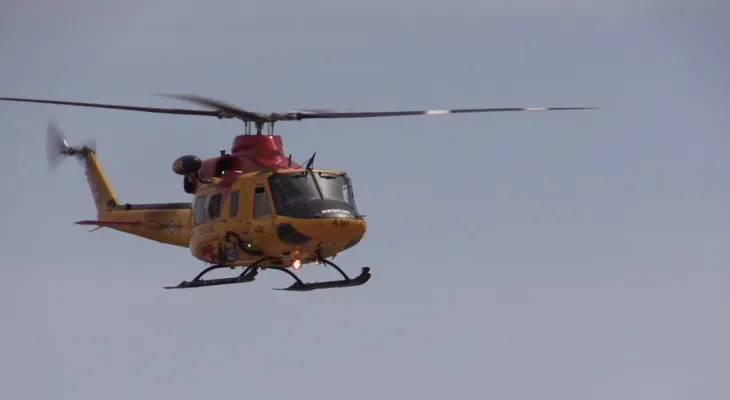Search here
Newspaper
Search here

Arab Canada News
News

Published: May 11, 2022
Those helicopters flying at low altitude in red and yellow that I saw over Elgin County this week are members of the Royal Canadian Air Force (RCAF) continuing their search and rescue (SAR) training.
A CH-146 Griffon helicopter from the 424 Transport and Rescue Squadron and ships from the Canadian Coast Guard (CCG), the Canadian Coast Guard Auxiliary, and a civilian aircraft from the Civil Air Search and Rescue Association (CASARA) participated.
Danick Barrett, Griffon helicopter pilot with the 424 Transport and Rescue Squadron of the Royal Air Force, said: "It is essential for us to conduct rescues effectively this summer, and we cannot train on boat flying during the winter, so we need to be competent and effective in conducting our training and flying information with them."
On Tuesday afternoon, they were carrying out two missions. In partnership with CASARA, they were simulating a missing aircraft as well as a pilot in distress.
Said Wayne Harvey, chief pilot at CASARA, who partners with London Air Patrol Inc.
"We will board the plane; I will pretend to be a person going on a trip with my friend in the vehicle. My friend is not well and cannot fly the plane, so I asked for help, and they will send a Griffon helicopter to come find me and talk me through how to operate a plane and land at the airport," explained Harvey, who has worked with CASARA for seven years with the army on major search operations involving accidents and simpler tasks such as locating a plane with a false emergency transmitter.
Harvey said: "We receive our missions from the army." "We are a registered charity, and everyone in it is a volunteer, and we assist the army in their training; they are also dispatched for search and rescue calls."
Later Tuesday afternoon, they carried out a maritime exercise with CCG near Port Dover, Ont., on Lake Erie.
Barrett said: "We will receive calls for people in distress on boats, so we need search and rescue technicians to assist them on the boats."
"What we practice and train for here is to be able to lift them to the boats to get them to the patient, assess how everything is going for them, and anything they might need.
If needed, they will return the patient aboard the helicopter and transport them to the nearest hospital." The RCAF advises aircraft involved in search and rescue activities to fly at low altitude in order to locate and assist people who may be in distress.
They sometimes move at slower speeds and circle an area more than once. For this training, they will deploy search and rescue technicians via hoist using various support ship techniques.
Smoke markers will also be used to indicate wind direction and approximate speed to ensure the placement of life-saving equipment and also to help locate people in the water. Training will continue at St. Thomas local airport until Friday.
Comments